IRBIL, Iraqi Kurdistan: The photo of a blood-stained Kurdish girl, whose school in Iraq’s northern Kurdistan Region was attacked on Wednesday by Iranian drones and missiles, has put a human face on the mounting cost of Tehran’s indiscriminate assault on the semi-autonomous region.
Clips posted by journalists showed terror-stricken Kurdish school children being escorted to safety and sheltering on hillsides near the town of Koya, which analysts described as an intolerable act of aggression aimed at diverting international attention away from the ongoing protests roiling the Islamic Republic.
Mobile phone footage shared with local news channels shows primary school children screaming in response to nearby explosions as panicked parents and teachers try to usher them away.
On Wednesday, Iran’s Islamic Revolutionary Guard Corps (IRGC) launched several Fateh 360 ballistic missiles, a new missile Iran only test-fired for the first time earlier in September, and Shahed 136 suicide drones, the same recently deployed by Russia in the Ukraine war, at targets throughout the Kurdistan Region of neighboring Iraq.
Opinion
This section contains relevant reference points, placed in (Opinion field)
The purported targets were the headquarters of Iranian Kurdish dissident groups. At least 14 people are reported to have been killed and 58 injured, including women and children.
Kurdish dissident groups targeted in the strikes include the Kurdistan Democratic Party of Iran (KDPI), the Kurdistan Freedom Party, and Komala. According to local reports, Rozhhalat primary school in Koya, which is situated close to the KDPI’s main base in Iraq’s Kurdistan Region, was also hit in what experts believe was a deliberate attack.
“It appears that Iran acted upon geospatial intelligence for the strikes, but it remains to be known how precise such intelligence was,” Ceng Sagnic, head of analysis at TAM-C Solutions, a multinational geopolitical intelligence and consultancy firm, told Arab News.
“It is fairly unlikely that targeted locations were randomly selected for strikes since they occurred in areas with high KDPI activity, which may suggest that a school was selected on purpose.”
He added: “Iran had previously targeted civilian-populated areas of the Iraqi Kurdistan Region, in attempts to pressure both the local population and the KRG (Kurdistan Regional Government) against Iranian Kurdish dissident groups.”
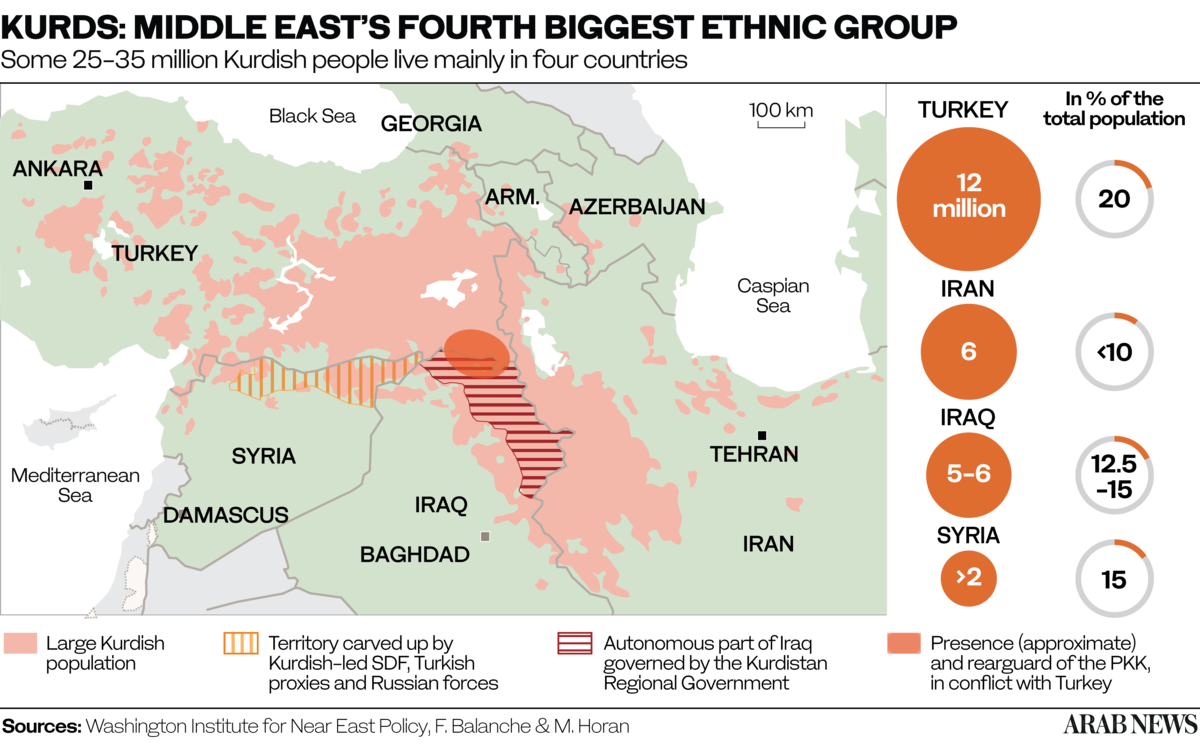
Osamah Golpy, a Kurdish journalist who was in Koya on Wednesday, said most of the previous attacks Iran carried out against dissident bases in Iraqi Kurdistan were “almost always done at night.”
“This time Iran chose to attack in the daytime since it wanted media coverage, as if to send a message,” he told Arab News. “Iran wanted to show it can carry out attacks against the Peshmerga (the KRG’s armed forces) and civilians to terrorize the (Iranian Kurdish) dissident groups and send a message to the Iraqi Kurdistan Region, including the population.”
The attacks coincided with anti-regime protests across Iran following the death of 22-year-old Iranian Kurdish woman Mahsa Amini in the custody of Iran’s morality police, who had detained her on the grounds that she was wearing her mandatory hijab improperly.
The Iranian strikes on Iraq’s Kurdistan Region were broadcast live on Iranian television throughout the day. Golpy believes this was an intentional move on Tehran’s part to “set the agenda.”
“There is less coverage of the protests and more coverage of Iranian attacks inside Iraqi Kurdistan,” he said. “My understanding is that it was intentional and it was timed to send these messages to various stakeholders, including the Kurdistan Region and the Iranian Kurdish dissident groups.”
Sagnic of TAM-C Solutions also suspects the attacks by the IRGC are designed to deflect attention from the ongoing domestic protests. “Iran’s widespread cross-border strikes overlapping with the largest anti-regime protest movement do not seem to be a mere coincidence,” he said.
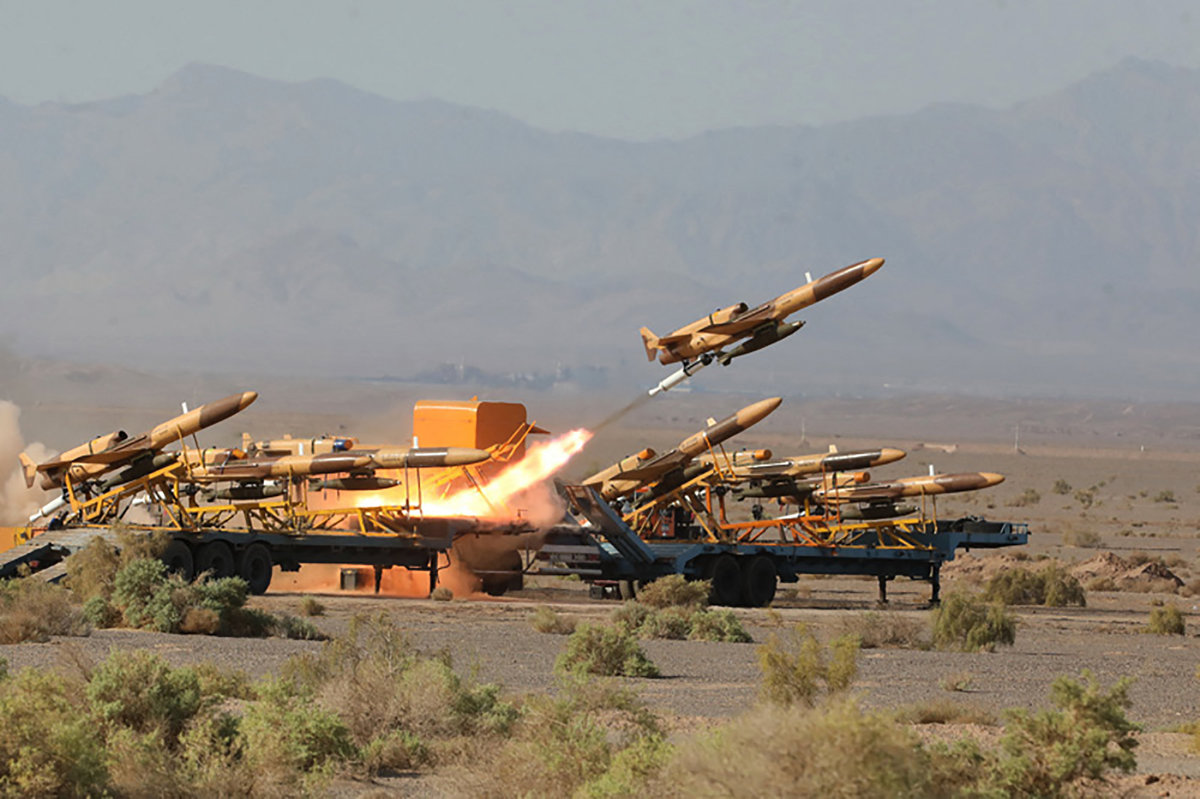
Handout picture provided by the Iranian Army office on August 25, 2022 shows the launch of a military UAV during a drill at an undisclosed location in Iran. (AFP)
“Iran has particularly been using cross-border attacks in Iraqi Kurdistan as a diversionary tool for public opinion during times of crises, with most of these attacks being portrayed as retaliation against the US and Israel.”
Sagnic believes that a “similar but expanded campaign” was likely the reason for the latest strikes, which he added is “underscored by a failed attempt to target US military facilities in (the Iraqi Kurdish capital) Irbil.”
He added: “In my opinion, Iran may have attempted to change the course of the public debate domestically by pointing to an outside ‘enemy’ said to be supported by the West. Tehran’s claims that the current public unrest is fueled by the US complements this theory.”
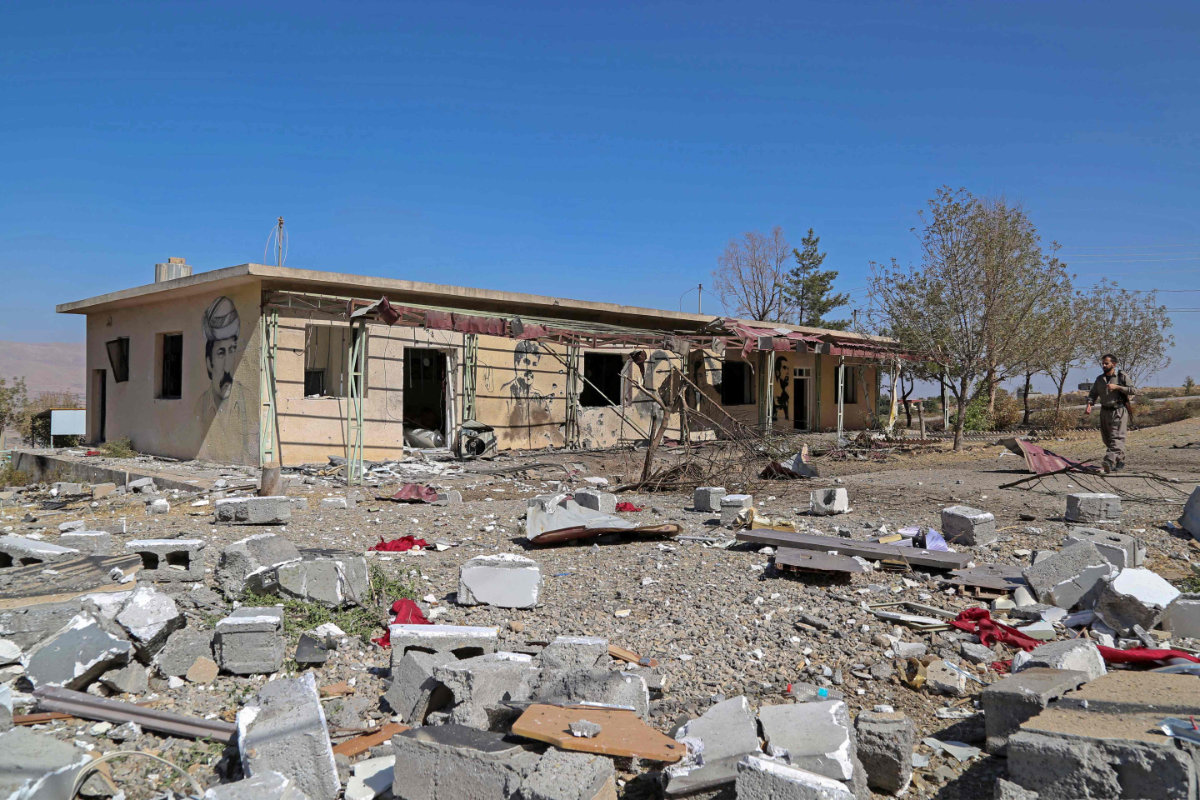
A partial view shows the aftermath of Iranian cross-border attacks in Zargwez, where exiled Iranian Kurdish parties maintain offices, around 15 km from Sulaimaniyah, Iraq on Sept. 28, 2022. (AFP)
Sagnic does not believe that Iran launched the cross-border assault as a preemptive move to deter or prevent Iranian Kurdish groups from actively intervening in Iran’s western Kurdish-majority region.
“I think attacks in Koya have more to do with the image that Iran wants to portray with regard to the purported foreign enemy and the involvement of dissidents rather than preventing further intervention by Kurdish groups stationed in Iraqi Kurdistan,” he said.
Although Sagnic does not believe Wednesday’s attacks are unprecedented, he says the timing was “rather interesting” and suggested it may “show a certain level of panic within the regime establishment.”
“In my understanding, Tehran’s main goal was to claim to its own public that the unrest is rooted outside Iran, hence required cross-border retaliations,” he said.
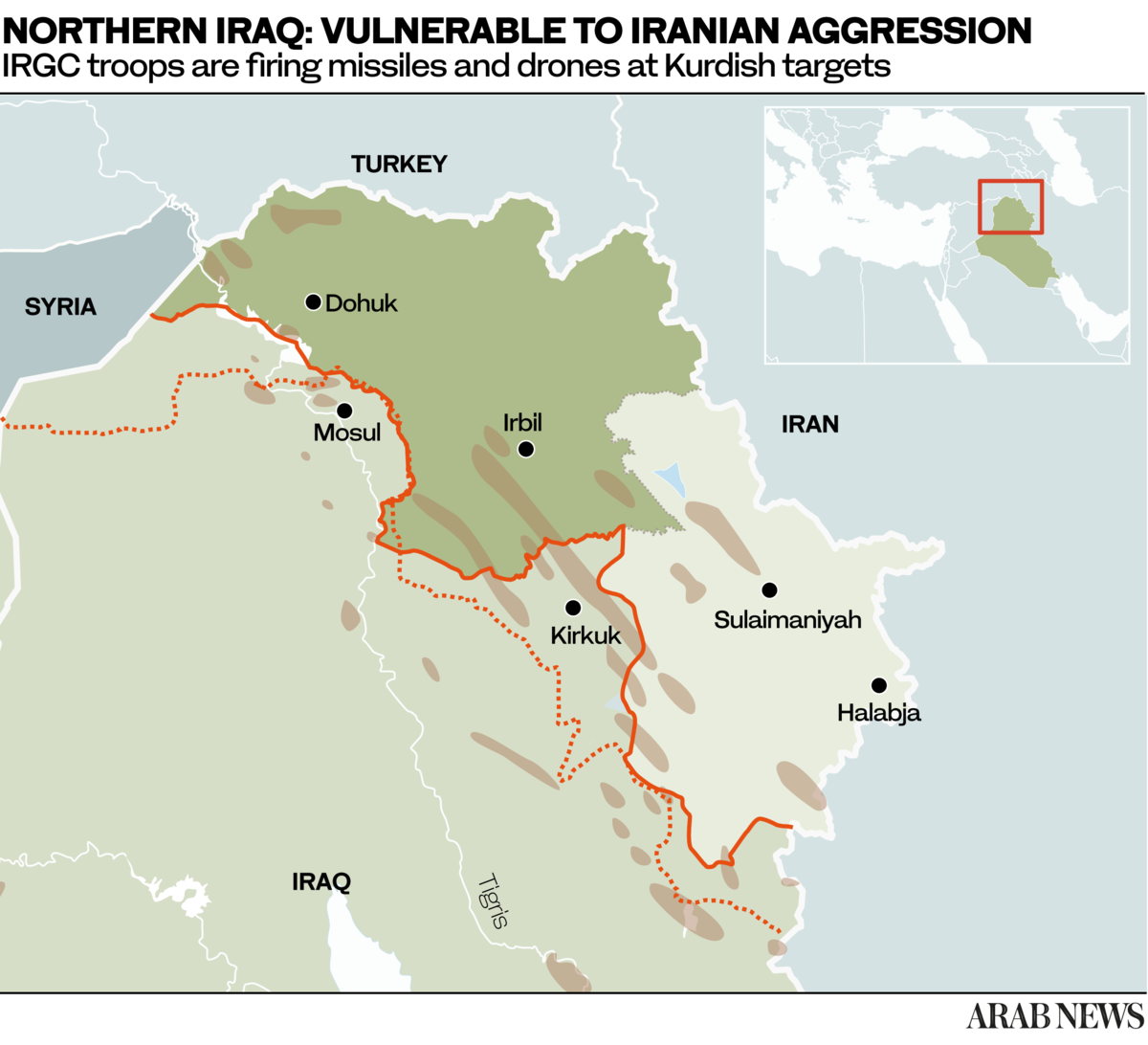
“Indeed there remains a strong probability that Iran may attempt to advance the policy of linking the current unrest to extraterritorial actors, and conduct continued cross-border attacks to condition the public opinion. Therefore more attacks in the Kurdistan Region, especially in Irbil where the closest large-scale Western military and diplomatic presence to Iran is located.”
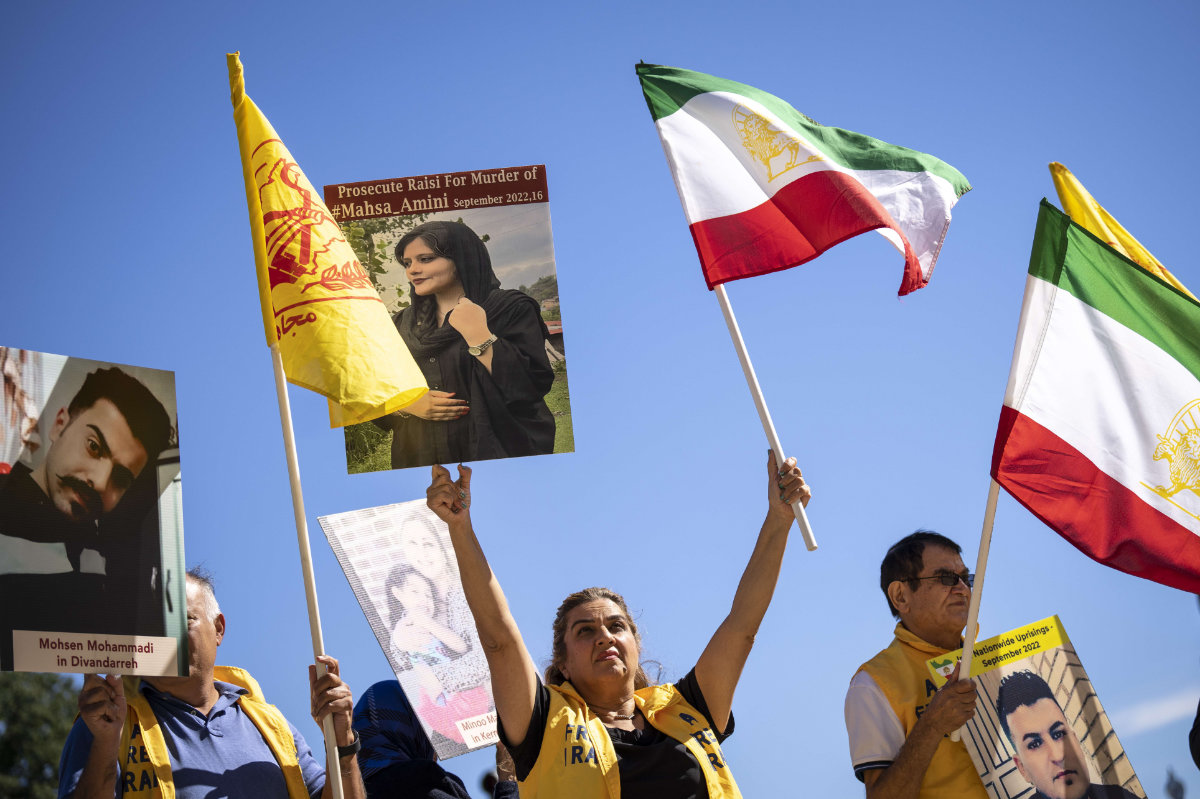
Iranian Americans rally in Washington, DC, in support of the Iranian resistance movement and to denounce the death of Mahsa Amini under the custody of Iranian religious police. (AFP)
Kurdish journalist Golpy concurs, saying that the timing of the attacks on a neighboring country appears to be more than a mere coincidence while mass protests are taking place within Iran’s own borders.
“Almost every time when there are protests, the regime tries to contain and somehow address the issue within the country,” said Golpy. “Of course they have always blamed external stakeholders such as Israel and the US, but they never take action against the alleged external actors.
“But this time, I think for the first time, Iran tried to address the issue outside of its borders by attacking these Kurdish dissident groups, which, in my understanding, is a sign of weakness.”


























